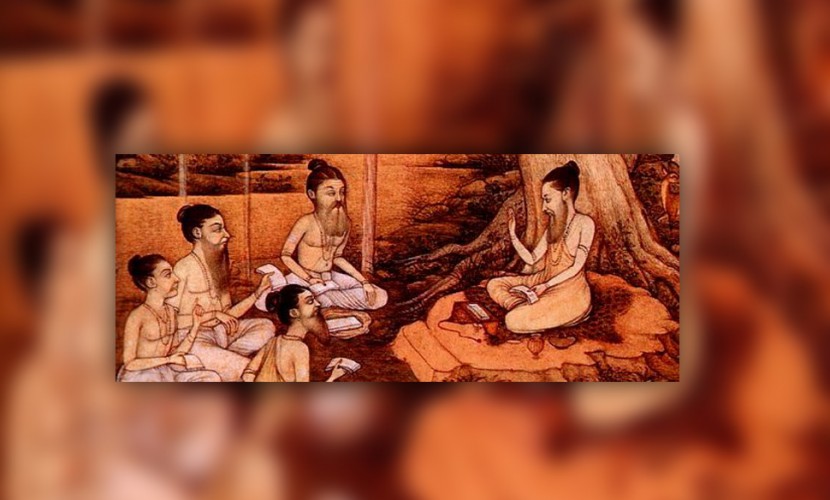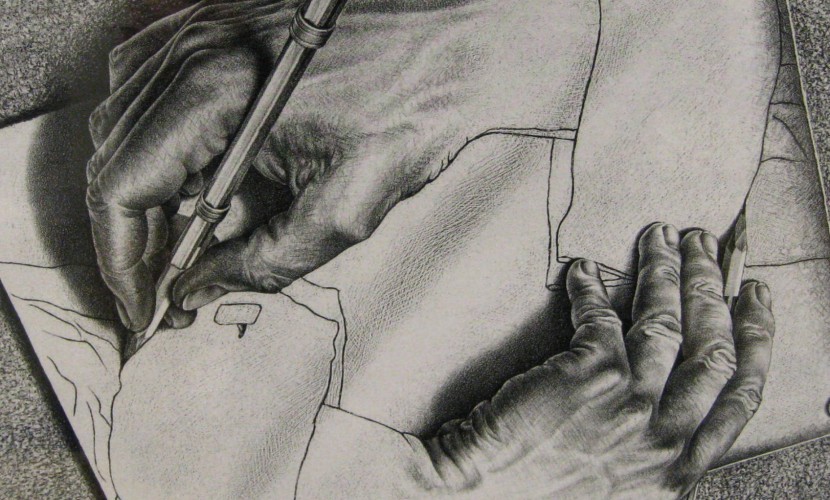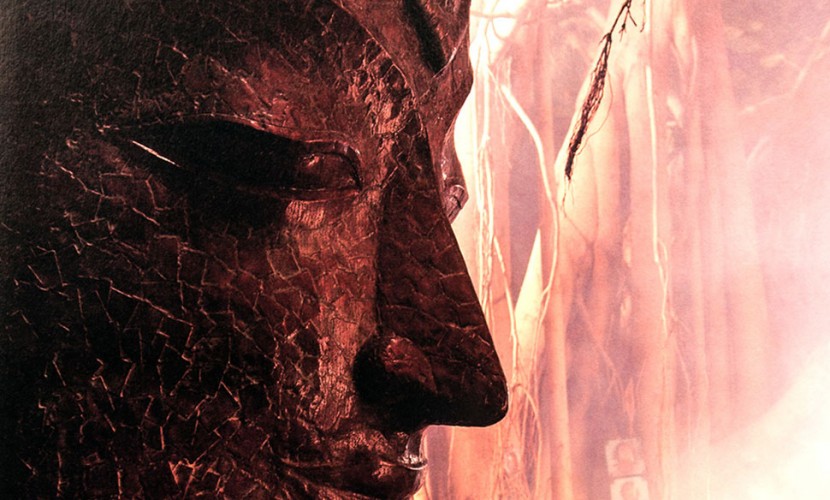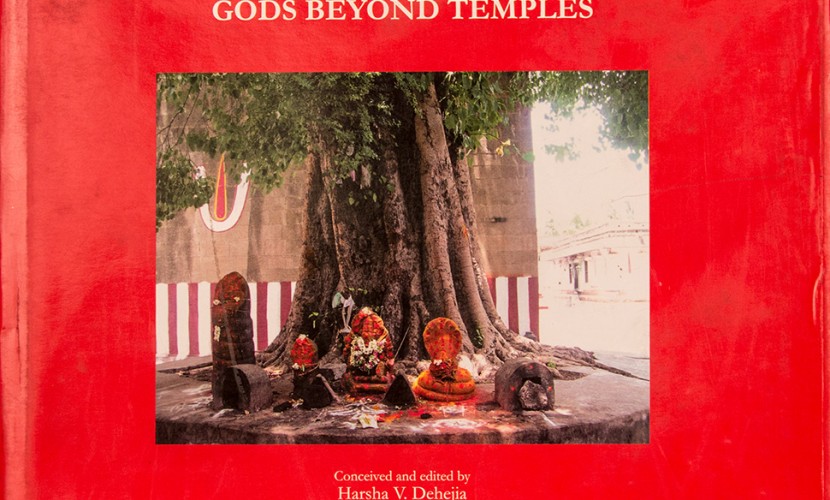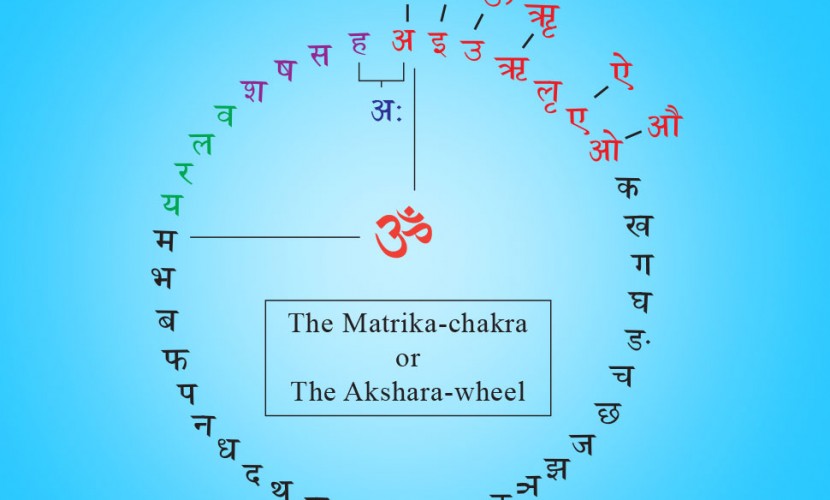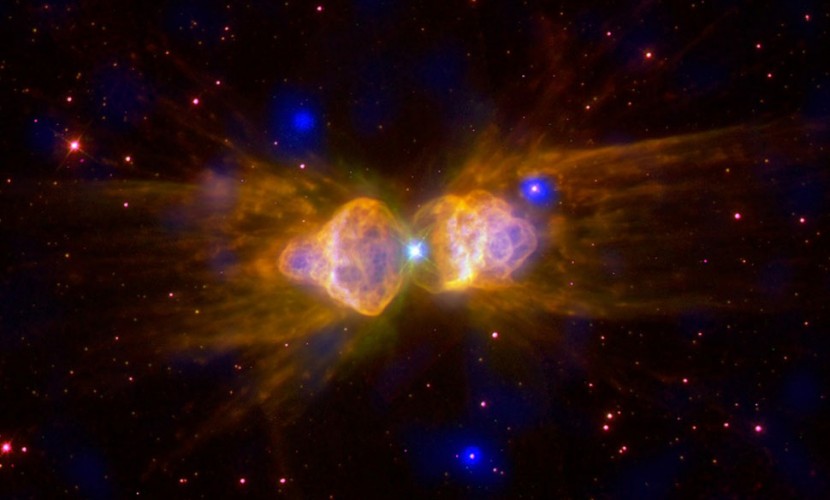Beyond the Universe; Rediscovering Ancient Insights R.K. Mishraji was born on this day, Sept. 28th, 1932. He would have been 78 years old today. It is my privilege to review his first book titled, Before the Beginning and After the End before an august audience, all who have been touched by his persona in some way or the other between the Beginning of his life, and its premature End. However, just as this title gives us a feeling of continuity similarly, we can even today sense Mishraji’s presence amongst us through his immortal words. He was a prolific writer, thinker, journalist, politician, and, few people knew that he was a Vedic scholar and a profound philosopher too. Based on the deep-rooted understanding of his Guru Shri Motilal Shastriji and before him Shri Madhusudan Ojhaji, Mishraji continued the scientific analysis of the Vedas in his four books in English.The material is so vast and the contents so extremely erudite that to do justice to even one volume in finite time is a difficult task. As we will see now, Before the Beginning and After the End is a text replete with Vedic revelations and thus Mishraji has qualified its title further as ‘Rediscovering […]
The Shiv sūtras were first revealed in the late 8th century A.D. by Shiva to Vasugupta in person on mount Mahadeva in the Kashmir Himalayas. Later expounded by one of his students Abhinavagupta, this philosophy came to be known as Kashmir Shaivism and is an integral part of the Agamas literature in Hindu thought. The Spanda-kaarikas are a commentary on the Shiva- sūtras whose authorship is credited to Kallatta, a chief disciple. The first Shlöka of these kaarikas underlines the very act of Creation & Destruction of this ephemeral Universe as the mere blink of Shiva’s eyes:- We laud that Shankara, by whose mere opening and shutting of the eye-lids, there is the appearance and dissolution of the world and who is the source of the glorious powers of the collective whole of the shaktis in various forms. (1st Shloka) Spanda-kaarikaas, ‘The Divine Creative Pulsation’ by Jaidev Singh[1] Spanda literally means a ‘throb’, a pulsation of energy that spawns all creation. One blink of Shiva’s eyes, the unmesha and the nimesha, releases an intense cosmic pulse that unfolds billions of years of galactic causation. The Unknown in the Shiva- sūtras is the Naad-Brahman and this initial pulse is […]
In Conversation with Ravi Khanna, philosopher and tree lover. ‘People who have wild ideas about how to run this Earth, ought to start with a small garden.’ This is a quote I came across in the brochure for a rose garden, in the Qutab farmland area, 35 years ago. Today, all this pristine and accessible land is home to motels, banquet halls and unauthorised village sprawls. The traffic snarls extend for miles and the air is as foul as it is in the rest of the city. Traffic is definitely a problem in Delhi. Any thoughts on that? It is unfortunate that so little thought has gone into the planning of Delhi. The reason for the chaos in Delhi is a lack of vision. Another problem is corruption, with the assignation of projects being dependent less on the needs of the city and more on which civic work will be the most lucrative for those who want their pockets lined. For example, the BRT bus corridor is a complete failure while the Ring Road planned by Nehru is so beautiful and useful for the city even now. Not only is the BRT corridor unlikely to ease the suffering of the […]
R K Mishraji was a prolific writer and his works encompass decades of his experiences. His knowledge was not limited to the long and pivotal journalistic career but he also devoted a large part of his time to the study of the Vedas in Sanskrit under the guidance of Late Pandit Motilal Shastriji of Jaipur. He thus inherited the Vedic scholarship started by the Late Pandit Madhusudan Ojha, the Guru of Motilal Shastriji, in the early 1900s and handed down to Shri Motilal Shastriji and from him to Shri R K Mishraji. This was a study into the “insights” or the vijnana-bhashya or “scientific explanations”of the various Brahmanas & Upanishads of the Vedas. This tradition is unique both in its content and style. These “scientific treatise” have detailed explanation of the meaning and significance of each mantra of the Principal Upanishads with cross-referencing amongst other Vedic texts. These lectures of Motilal Shastriji had attracted the attention of the Late Dr. Rajendra Prasad, the first President of independent India who encouraged the publication and was the chief patron of large number of Shastriji’s books. On the transition of Shastriji in 1960, at the early age of 52 years, R K Mishraji […]
Millions of Indians chant the Shāntī Pāth or the peace invocation daily at the beginning and end of every satsangh, literally a gathering of truth-seekers. Such gatherings are commonplace among the populace where thousands assemble to listen to vedic discourses from Gurus of their choice. The Shāntī Pāth is placed at the beginning of the Iśavāsya Upanishad and in its extended form is the first shlöka of the 5th Adhyāy of the Brihadaranayak Upanishad . ! PaUNa-ma\ Ad:, PaUNa-ma\ [dma\ , PaUNaa-t\ PaUNa-ma\ ]dcyato. PaUNa-sya PaUNa-ma\ Aadaya , PaUNa-ma\ eva AvaiSaYyato . ! Saaint: Saaint: Saaint:. pūrnam adah, pūrnam idam, pūrnāt pūrnam udacyate pūrnasya pūrnam ādāya pūrnam evāvaśisyate. For our purpose here we take S.Radhakrishnan’s[1] explanation : That is full, this is full. From fullness fullness proceeds. If we take away the fullness of fullness, even then fullness remains. Aum (the syllable) is Brahman (who) is the ether, the primeval ether…. Swami Chinmayanandji[2] explains it as follows : That is Whole; this is whole; from the Whole the whole becomes manifest. From the Whole when the whole is negated what remains is again the Whole. Paul Deussen[3] translates it as: That is perfect and this is perfect, out of the […]
yasyaaonmaoYainamaoYaaByaaM jagat: p`layaaodyaaO . tM Sai>caËivaBavap`BavaM SaMkrM stuma: ..1.. yasya ]nmaoYa inamaoYaaByaaM jagat: p`laya ]dyaaO. tM Sai>caË ivaBava p`BavaM SaMkrM stuma: ..1.. We laud that Shankara by whose mere opening and shutting of the eye-lids there is the appearance and dissolution of the world and who is the source of the glorious powers of the collective whole of the shaktis in various forms. (1st Shloka) Spanda-kaarikaas, ‘The Divine Creative Pulsation’ by Jaidev Singh From time to time, our land has given rise to enlightened souls called Avatars. These rare persons have often taken birth in turbulent times of external invasions or internal decrepitude. They have all led exemplary existences and one such embodiment was Vasugupta, the main exponent of the Shiva- sutras. These sutras or ‘condensed mantras’ were first revealed, in the late 8th century A.D., by Shiva directly to Vasugupta on mount Mahadeva in the Kashmir Himalayas. Later expounded by one of his students Abhinavagupta, this philosophy came to be known as Kashmir Shaivism and is an integral part of the Agamas literature in Hindu thought. The Spanda-kaarikaas are a commentary on the Shiva- sutras whose authorship is credited to Kallatta, a chief disciple. Spanda literally means a ‘throb’, […]
by Ravi Khanna “Science & Spirituality in Modern India” Feb. 5 – 7, 2006 The Big Picture for the Science of Consciousness INTRODUCTION The western study of consciousness has progressed very rapidly in the last century but it is still stuck in the mould of mind – body dualism. This is best brought out in the words of a recent Time magazine quote [1]…. “If you close your eyes and think about it for a while, as philosophers have done for centuries, the world of the mind seems very different from the one inhabited by our bodies. The psychic space inside our heads is infinite and ethereal; it seems obvious that it must be made of different stuff than all the other organs. Cut into the body, and blood pours forth. But slice into the brain, and thoughts and emotions don’t spill out onto the operating table. Love and anger can’t be collected in a test tube to be weighed and measured. René Descartes, the great 17th century French mathematician and philosopher, enshrined this metaphysical divide in what came to be known in Western philosophy as mind-body dualism. Many Eastern mystical traditions, contemplating the same inner space, have come […]
As the Vedic rishis sat in the serene foothills of the Himalayas, thousands of years ago, they meditated upon the mysteries of the Universe – the Unknown, the Brahman. Their silent minds were in complete synchronicity with the world around them – a unique unison of mind and matter. In this heightened state of Cosmic consciousness answers floated into their enlightened senses as shrutis or latent sound bytes. This was the origin of the Vedas. The mind was the laboratory and the Universal truth the subject. This is how the Unknown, Brahman revealed itself as the first shabd or word. ■■ The Maitri Upanishad [1] VI.22 explains this shabd as arising from a-shabd or non-sound. It says :- And it has been said, there are verily, two Brahmans to be meditated upon – sound and non-sound. By sound alone is the non-sound revealed….[2] Shabd not only means the ‘spoken word’ but it also carries with it the eternal quality of the non-sound. This can be understood as ‘memes’, a concept put forth by Richard Dawkins [3]. He says words, besides pronunciation, carry abstract ideas and together he calls them ‘memes’. These ‘memes’ are “cultural transmission units” that go from memory to memory […]
vaNa- iva&anaBaaYyaM (The Metaphysics of the Sanskrit Alphabet) by Ravi Khanna gee_kay@vsnl.com The Circle of Life by M. C. Escher Paper presented at the International Seminar on SABDA: TEXT AND INTERPRETATION IN INDIAN THOUGHT 2-4 February 2004 Organized by Centre of Linguistics and English, Jawaharlal Nehru University vaNa- iva&anaBaaYyaM (The Metaphysics of the Sanskrit Alphabet) I commence my talk with a quote from Dr. Kapil Kapoor’s paper – “Vivarta & Parināma – Bhartriharī`s Theory of Language” – 1996. He cites Rig Veda I.164.41 as follows … gaurih mimāya salilāni takśati ekpadī dwipadī sā catuspadī astāpadī navpadī babhūvusī sahasrāksarā parme vyöman “ Gauri is the symbol of vāk or speech, according to the shrutīs …. the real significance is that the principle of vāk creates or fashions out the manifold forms out of the waters of the infinite ‘ocean of reality’ … the parme vyöman. You cannot cut forms or draw lines in water, you can do that only in space but ; but reality like water is continuous, indivisible…” The word used here for ocean is salilâ which actually means the surging of waters, the expression here alludes to an agitated ocean, one in which the waves are being […]
Figure – Figure , by Scott E. Kim (Sketch, 1975) (Pg. 69 – “Gödel, Escher & Bach” by Douglas R. Hofstadter) presented to Indian Insitute of Advanced Studies, Shimla Seminar on INDIAN KNOWLEDGE SYSTEMS Gyān and Vigyān I applaud the Indian Institute of Advanced Study at this initiative of chikitsa in our present day education systems. The timing is very correct since our dependence on the Western system that we inherited from the British has run its full course. This very West today is tiring with its technologies and fragmented areas of specializations, looking seriously towards the East for alternative, holistic systems of knowledge. This is best summarized in a recent Time magazine[1] special issue article “Your Mind Your Body” – I quote, – ‘If you close your eyes and think about it for a while, as philosophers have done for centuries, the world of the mind seems very different from the one inhabited by our bodies. The psychic space inside our heads is infinite and ethereal; it seems obvious that it must be made of different stuff than all the other organs. Cut into the body, and blood pours forth. But slice into the brain, and thoughts and emotions […]




